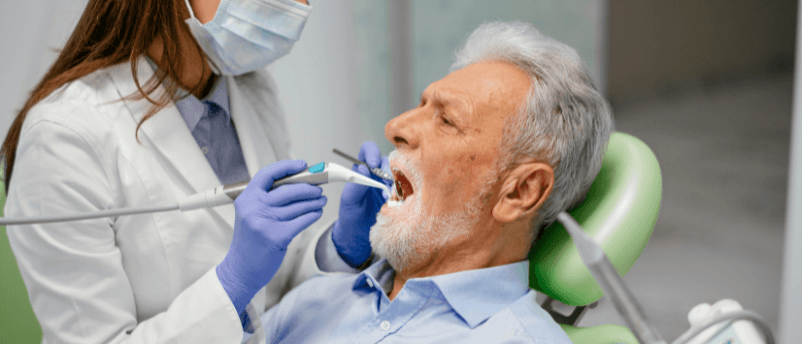
BioTechniques News
Aisha Al-Janabi

A recent study finds evidence of multi-cellular cross-kingdom superstructures that can move from tooth to tooth and cause more extensive tooth decay than their single-species equivalents.
A collaborative study led by researchers at the University of Pennsylvania (PA, USA) has discovered an unusual phenomenon in human saliva samples, which may just have you reaching for the floss. They’ve uncovered a “superorganism”, a 3D superstructure comprised of bacteria and yeast, which can crawl, walk and even leap from tooth to tooth, utilizing limb-like appendages that sprout from the sticky mass of cells. Whilst this may sound more like something from a David Cronenberg film than an academic journal, the authors of the paper believe this discovery may shed light on the mechanism of the spread of tooth decay.
When different microbial species adhere to a surface, they often form assemblages known as biofilms. The initial cells that grow on a surface adhere themselves together through sticky excretions into the extracellular matrix, which grows and develops into a living ‘city’ of single-celled life. On human teeth, biofilm presents itself as plaque and is the result of microbial growth in a sugar-rich environment. The bacteria and yeast convert the sugary leftover from our food and process it into acids, which erode the enamel in our teeth and cause decay.
Co-author Hyun Koo (University of Pennsylvania) and his lab specialize in the analysis of dental biofilm present in children with severe tooth decay. Using super-resolution and fluorescence in situ hybridization (FISH), the researchers analyzed saliva samples collected from toddlers experiencing severe tooth decay and found clusters of bacteria and fungi together. Curious about this observation, the team was eager to witness the behavior of these strange groups of cells when on the surface of a tooth.
The researchers used hydroxyapatite, a calcium phosphate mineral, as an analog for teeth and incubated bacteria and fungi on the mineral in human saliva at body temperature. They discovered large clumps of bacteria, yeast and tubular fungi known as hyphae. The team also demonstrated that upon adhering to a surface this conglomeration of species was more difficult to remove from a surface and more resistant to antimicrobial drugs than either bacteria or yeast alone.
However, what they witnessed next makes this study not for the faint of heart.
 Mathematical model calculates energetics of biological weapons
Mathematical model calculates energetics of biological weapons
Researchers at the University of Illinois have created a mathematical model to compare the energetics of different piercing mechanisms found in nature.
Koo and colleagues noted that these 3D appendages grow at a rate faster than either species left to their own devices and, in a mechanism that is not well understood, this ball of single-celled life can move. The bacterial species probed in the study are non-motile, as are the yeast in this cavity-causing cocktail of cells, yet when combined in this superorganism they are able to crawl from tooth to tooth. This organism relies on hyphae to move around, which anchor onto the surface of the tooth and then launch the whole microscopic community forward.
Microscopy revealed that these superorganisms were able to ‘leap’ 100 micrometers. “That is more than 200 times their own body length making them even better than most vertebrates, relative to body size,” added Zhi Ren (University of Pennsylvania), the first author of the paper. “For example, tree frogs and grasshoppers can leap forward about 50 and 20 times their own body length, respectively.”
This strategy of bounding from tooth to tooth allows the microbes to move and grow simultaneously. Consequently, they can quickly colonize surfaces and move to new surfaces. In an in vitro model on real human teeth, these superorganisms displayed more extensive tooth decay as a result of these marauding microbes.
This finding gives insight into the evolution of mutualism as this multicellular behavior benefits both species and allows them to thrive better when working together than they can apart.
It is hoped that specifically targeting these sticky clusters to inhibit their binding may be able to mitigate childhood tooth decay. Additionally, the authors are confident that having a greater understanding of these aggregated organisms will allow future advancements in microbiology and in understanding infectious diseases or environmental contamination.
The post Superorganism identified that can ‘leap’ from tooth to tooth appeared first on BioTechniques.
Full BioTechniques Article here
Powered by WPeMatico
